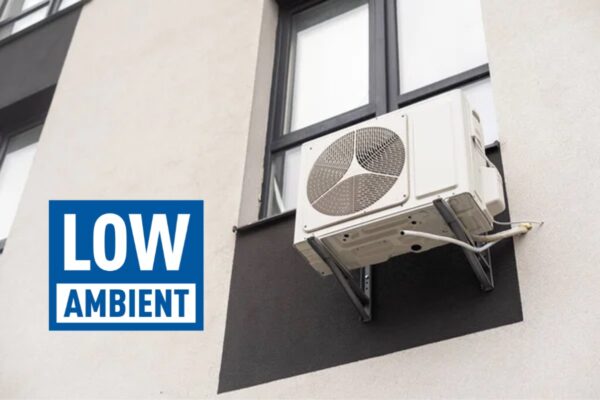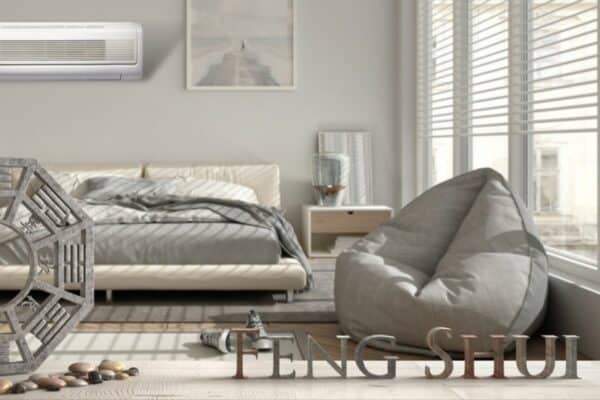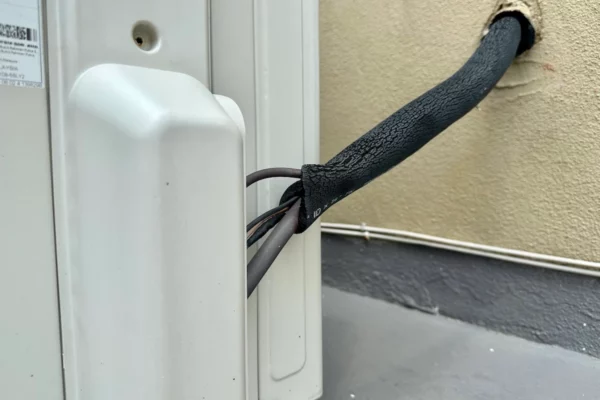A Complete Guide to Air Conditioner for 2,000 Sq Ft House
Many houses are about 2,000 sqft. A 2,000 sqft house is definitely not a small house, but it’s not a big house either. Thus, choosing the air conditioner for a 2,000 sqft house can be tricky.
The first step of getting the air conditioner for a 2,000 sqft house is to calculate the capacity needed for each room. Next, you’ll need to select a suitable air conditioner based on the capacity needed. Then, you’ll need to decide which type of air conditioner you want for your house.
When it comes to a 2000 sqft house, there is more to consider rather than just a simple BTU calculator. At the end of this article, I’ll also include my recommended air conditioners for a 2,000 sqft house.
What size air conditioner for a 2,000 sqft house?
As mentioned earlier, we need to calculate the cooling capacity needed for the house. The proper way of calculating the capacity is by using heat load calculations. However, the heat load calculations are very complex and often not suitable for a normal person.
Thus, the rule of thumb for cooling capacity is developed and widely used around the world. Using the rule of thumb to estimate the capacity needed is not just fast but also fairly accurate.
Furthermore, most residential buildings are typical. They have more or less the same layout and design. Thus, detailed heat load calculations often are not necessary.
How to Calculate the Capacity Needed?
We need to decide which rooms need the air conditioner and what is the room floor area. Every room may have different characteristics which can affect the capacity needed.
1. Determine the Floor Area for Each Room
Measure the length and width to get the room area. I’ll be using square feet as the unit of measurement. So, if you’re using meter, just multiple the square meter by 10.76 to convert it into square feet.
Following is an example of a 2,000 sqft double storey house plan. I divided all the rooms that typically need cooling and calculated the individual room floor area.

For the hallways/corridors, you may include their floor areas if it is significant. Else, you may ignore them like I do. You can include any other rooms that you want cooling/heating.
2. Estimate the Capacity Needed for Each Room
Energy Star recommended that for a room area of between 100 sqft and 250 sqft, the capacity needed is between 5,000 btu/hr and 6,000 btu/hr.
However, certain rooms require more capacity, especially when they have large windows. The below table is the capacity needed for certain room areas from Energy Star:

Furthermore, Energy Star added that if a room is very sunny, add 10% more capacity or else, reduce 10% capacity.
Besides, if the room has more than two persons, add 600 btu/hr for every additional person. For the kitchen, add 4,000 btu/hr to overcome the heat gain from cooking appliances.
Finally, if the ceiling height is above 9 feet, add 1,000 btu/hr for every additional foott.
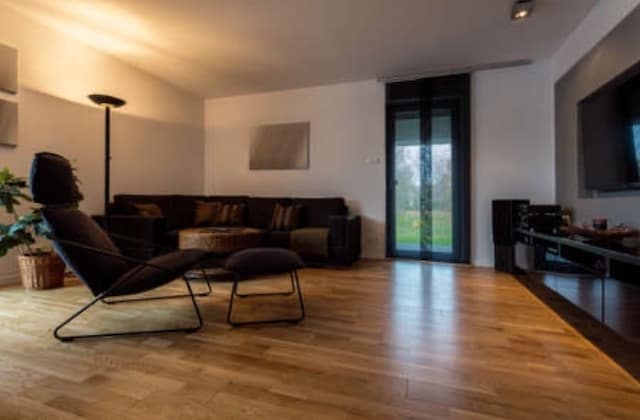
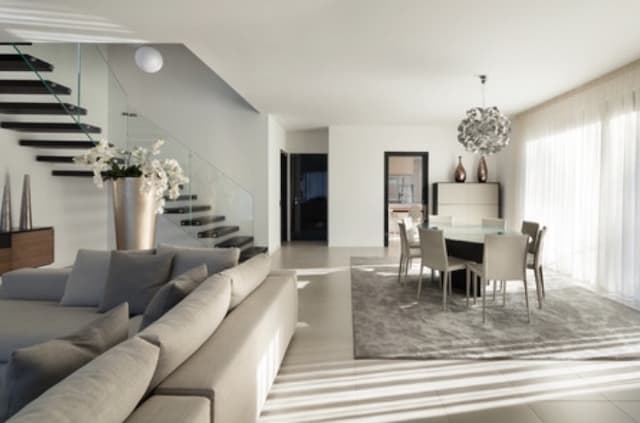

So, back to the above example using a double storey house, the capacity needed can be as follow:
| Room | Capacity Needed |
|---|---|
| Dining | 7,300 btu/hr |
| Kitchen | 9,000 btu/hr |
| Living | 9,420 btu/hr |
| Study | 5,000 btu/hr |
| Guest | 5,000 btu/hr |
| Bed 2 | 5,000 btu/hr |
| Bed 1 | 6,600 btu/hr |
| Bed 3 | 5,500 btu/hr |
| Sitting | 6,600 btu/hr |
The dining and living room usually has more people and thus, more capacity is needed. If you have 5 family members, you can add 1,800 btu/hr to both the dining and living room. In addition, both the dining and living room have large windows which will be very sunny.
So, an additional 10% capacity is added for both rooms.
If you prefer to have thick curtains that shade the room, you can choose not to increase the cooling capacity. Also, if you have a ceiling that is higher than 9 feet, you’ll need to add 1,000 btu/hr for every additional foot.
Lastly, I prefer to add another 10% capacity for the living room due to it is an open area that connects to the hallways/corridors.
3. Select the Air Conditioner
Air conditioners are produced with standard capacity. You can’t find an air conditioner odd capacity such as 7,300 btu/hr. Following is the common capacity of an air conditioner:
| Btu/hr | Ton | kW | HP |
|---|---|---|---|
| 9,000 | 0.75 | 2.5 | 1.0 |
| 12,000 | 1 | 3.5 | 1.5 |
| 18,000 | 1.5 | 5.0 | 2.0 |
| 24,000 | 2 | 7.1 | 2.5 |
| 30,000 | 2.5 | 9.1 | 3.0 |
| 36,000 | 3 | 10.0 | 3.5 |
Although 1 kW of cooling capacity is equivalent to 3,412 btu/hr of cooling capacity, actual air conditioners often don’t match exactly with the conversion. Thus, we just select the air conditioner size nearest to the calculated cooling capacity.
You may have noticed that the smallest air conditioner is more than the capacity needed for the double storey house we just calculated above. So, does it means that the air conditioner will overcool the small rooms?
Nowadays, most air conditioners have inverter technology which allows them to regulate their cooling capacity as necessary. For instance, many 9,000 btu/hr air conditioners can operate anywhere between 4,000 btu/hr and 10,000 btu/hr.
Thus, if you opt for inverter air conditioners, you’ll be fine.
On the other hand, windows air conditioners have much lower capacity. Many window air conditioners start at a cooling capacity of 5,000 btu/hr. Some window air conditioners are 4,000 btu/hr.
However, window air conditioners are too noisy to use for the bedroom.
Which type of air conditioner for a 2000 sqft house?
Just for residential application, there are few types of air conditioners available for you to choose from. But, don’t worry, let’s break it down into two types of air conditioners.
Ductless Air Conditioners
As the name suggests, ductless air conditioners don’t need complex and costly ductwork. There are two different types of ductless systems; a) split system and b) packaged system.
Typically, a split air conditioner has two units; an indoor unit and an outdoor unit. The split system is best known for high efficient and low noise.
On the other hand, there is the multi split system which can have multiple indoor units couple with only a single outdoor unit, making it an excellent space saving air conditioning system.
Packaged systems are usually more suitable for people who have a tight budget. They are cheaper than the split system but very noisy and less efficient. The two most popular packaged systems are the window air conditioner and the portable air conditioner.
Ducted Air Conditioners
For a 2,000 sqft house, it makes sense to opt for a centralized ducted air conditioning system, especially when you need to have a furnace. A furnace works very well with the ducted air conditioning system.
Often, many houses use a large centralized ducted air conditioner. However, you also can choose to have multiple smaller ducted air conditioners just for your living and dining room to look nice and neat.
For example, we can use a 24,000 btu/hr ducted single/min split air conditioner for all three of the living room, dining room and kitchen for the above double storey house instead of having three separate split air conditioners.
What will increase the overall cost of an air conditioning system?
The total air conditioning cost for a 2,000 sqft house can be vastly different depending on many factors such as the house layout, type of system, location and contractors.
However, I can provide you what are the things that will increase the air conditioning cost for your house.
1. Complex air conditioning system is more expensive
Complex air conditioning systems such as the ducted air conditioners, multi split and VRF system are more expensive. Although both the multi split and VRF system don’t require ducts, they are more expensive than the single/mini split because they have more features and sophisticated controls.
2. More air conditioners equal to more expensive
If you are struggling between using one unit of 2 Ton air conditioner or two units of 1 Ton air conditioner, using one unit is always cheaper than two units.
For the above example of a double storey house, using one unit of 18,000 btu/hr air conditioner for the dining room and kitchen is better than having two units of 9,000 btu/hr air conditioner.
More air conditioners not only cost more on the air conditioner itself, you’ll also pay more for the installation and maintenance.
However, one unit may not able to deliver cold air to the furthest corner and thus, that’s when two units make more sense than one unit.
3. The further the outdoor unit, the more expensive it gets
If you opt for the split system, try not to place the outdoor units too far away from the indoor units. The refrigerant pipes are made of copper and it is expensive. Thus, the longer it gets, the more you have to pay the contractors.
However, some contractors may advise you a better outdoor unit location such as a place where direct sunlight is avoided. While it may save some energy but, you’ll need to check how much the installation cost increases.
4. Contractors quote higher if it is more difficult to install
Most of the time, ducted air conditioners are much more difficult to install than ductless air conditioners. Furthermore, they took a longer time to install as well. Thus, contractors usually charge a lot more for ducted air conditioning systems.
5. Ducted air conditioning system is more expensive
Needless to say, ducted air conditioning systems involve much more things. Not only all the ductwork, but the air conditioner itself is also slightly more expensive.
Furthermore, additional costs may incur on the ceiling work where it needs to adjust/modify/add-on to suit the ducted air conditioning system.
So, what’s the best air conditioning system for you?
A 2,000 sqft house can be in different styles such as ranch, colonial, contemporary, Tudor, bungalow and even luxury condominium. Some of the house styles need special attention for their air conditioning system.
If your house is ranch or Tudor style, the ceiling is typically higher. So, ceiling cassette air conditioners are not suitable for you. Also, some Tudor houses don’t have a ceiling and thus, ducted air conditioners may not be the best choice.
Usually, wall mounted type air conditioners are well-suited for all kinds of houses.
Contemporary and bungalow are more expensive houses and therefore, you may want to use a centralized ducted air conditioning system to match the modern and luxury interior.
As for a luxury condominium, it is often not a good idea to use many air conditioning units because of the valuable space.
Thus, a VRF air conditioning system coupled with a mixture of ducted air conditioners, ceiling cassette and wall mounted air conditioner is very common. In addition, the VRF system has a centralized display controller which gives your house a “high-tech” feel.
My Recommended Air Conditioners for 2000 sqft House
My top choice of air conditioning system definitely is the ductless single/mini split air conditioners. It is by far the most popular and most used type of air conditioning system in the world as of 2020 according to IEA’s report.
Furthermore, ductless single/mini split air conditioners are both low cost and high efficiency. Why not?
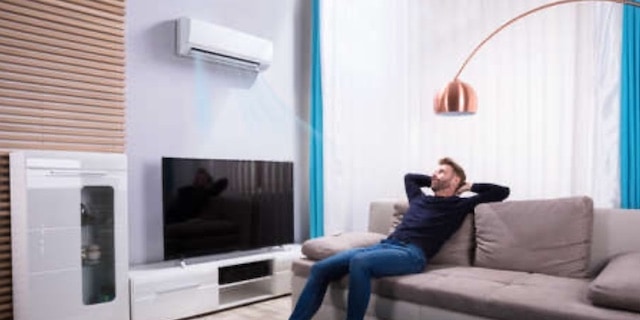
As for my second choice, I will go for a ductless VRF air conditioning system. The VRF air conditioning system has even better efficiency. The larger the system, the greater the efficiency. VRF air conditioners tend to cool very fast as their outdoor unit has a much larger capacity.
The best thing about the VRF system is the centralized display controller where you can basically do everything with just one controller.
Using high efficiency air conditioners greatly impacts how much you pay for the electricity later. Similarly, the larger the cooling capacity, the greater the differences.
For a 2000 sqft house, the saving is significantly more than just a room. Hence, despite they cost more, I will still propose anyone go for the split system.
Mini split is a great heating and cooling system. However, there are many brands and models. So, I did some study to come out the 4 Best Mini Splits in 2023. I encourage you to check it out if you’re considering one now.
On the other hand, I’m not a big fan of ducted air conditioners because they are much more expensive and more often, can’t achieve the efficiency as they are supposed to have due to poor installation.
In my opinion, the chances of a ducted air conditioner get installed inappropriately is much higher than the split air conditioners because ducted air conditioners involved so much more things.
Final Thought
On average, people don’t use high efficiency air conditioners. Accordingly to IEA’s report, we can save 45% on electricity costs if high efficiency air conditioners are used.
As carbon emissions are growing exponentially, we can take part in reducing electricity consumption and therefore, reducing carbon emissions by simply use high efficiency air conditioners.
If you have anything to add (or ask) about this topic, leave a comment down below!





